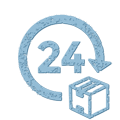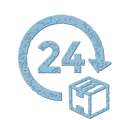
O Rhenium e dua na kaukamea dau yaco sara vakalevu ka vuqa sara na iyau ka vakavuna me duatani kina. E dau vakayagataki vakawasoma ena idini kaukauwa ka dau vakaitavi vakabibi sara ena vuqa na iwali ni wainimate. E rawa ni o raica na vuvui ena dua na ivakarau savasava ka tiki ni vuqa vei ira na ilawalawa kilai levu nikua. It can prove to be beneficial to those working in an assortment of industries, oka kina na, but not limited to the aerospace industry, the petroleum industry, ka vakalevu cake. Here are some more interesting facts about rhenium.
Rhenium was named after a river in Germany.
Rhenium was first discovered way back in 1925 by a trio of scientists named Otto Berg, Walter Noddack, and Ida Tacke Noddack. They named it after the Rhine River, which is located in Germany. They originally discovered it in a handful of minerals and ores.
Rhenium has very high boiling and melting points.
Mai na veigacagaca kece e vuravura, rhenium has the highest boiling point. Its resistance to heat makes it an ideal element to use in jet engines and other places in which it’ll be exposed to extreme heat. Rhenium also has the third-highest melting point of all the elements. Veilomataki and carbon are the only two elements that have higher melting points than rhenium. Me kena ikuri, rhenium has the fourth-highest density of all elements.
Rhenium is rarer than most other elements.
There is only about 40 kina 50 tons of rhenium produced every year. The majority of it comes from ores that are found in Chile. It’s believed to be one of the rarest elements situated in the Earth’s crust. The crust contains somewhere between one-half and one part per billion of rhenium.
Could your company benefit from utilizing rhenium? Eagle Alloys can supply you with everything from pure rhenium to tungsten rhenium in bars, pepa, peleti, foil, and other forms. Kacivi keimami ena 800-237-9012 today to receive a quote for rhenium.






